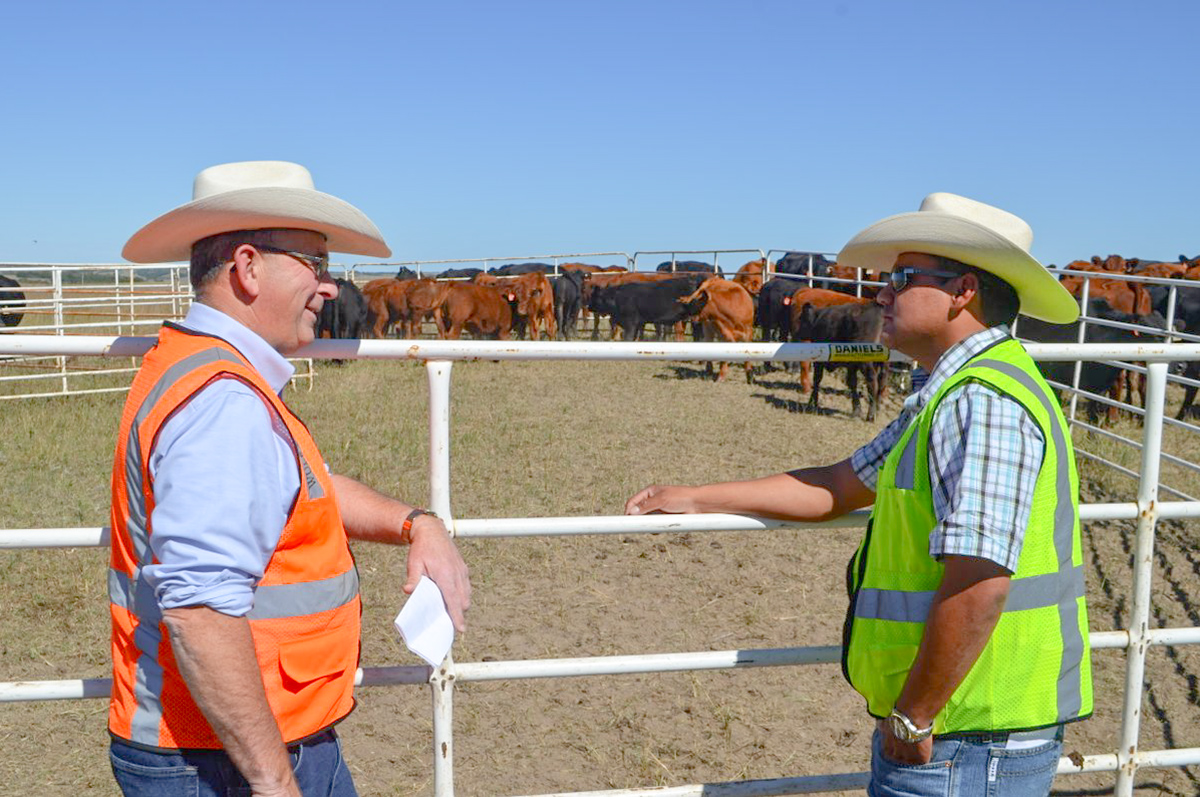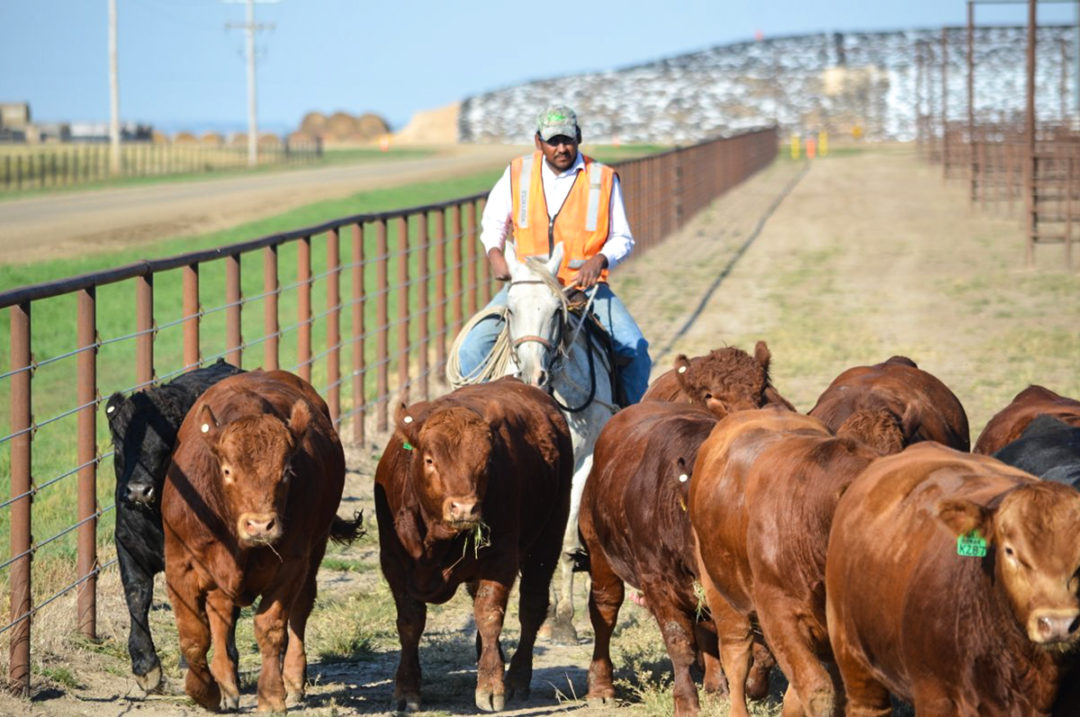As the beef industry advances, the scope of one of its fundamental programs – Beef Quality Assurance (BQA) – has broadened. The current BQA curriculum may have you raising an eyebrow at its chapter on worker safety. Worker safety may not apply directly to BQA’s traditional goal of improving carcass defects and enhancing beef quality, but through a modern lens, it does.
Beyond being a standard of business, providing a safe work environment has a trickle-down effect that impacts all other facets of BQA implementation. Human safety is the backbone of an effective, thriving cattle operation.
In conjunction with the national BQA advisory group, the National Cattlemen’s Beef Association (NCBA) producer education team is responsible for updating and evaluating BQA guidelines. Emma Mulvaney, NCBA associate director of BQA programs, finds the National Institute for Occupational Safety and Health (NIOSH) agriculture safety reports concerning and suggests the beef checkoff-funded BQA program can play a role in addressing these issues.
“In 2019, 410 farmers and farm workers died from a work-related injury, resulting in a fatality rate of 19.4 deaths per 100,000 workers,” Mulvaney says. “By keeping those who care for cattle safe, they are able to best care for cattle.”
Mulvaney also says that prioritizing human safety improves both animal welfare and meat quality outcomes.
“For instance, transporting cattle can be one of the most stressful events in the life of that animal. By knowing how to properly load and unload a trailer, while keeping human safety as a top priority, meat quality outcomes will also be optimal,” she says.
Luke Larson is a member of the Colorado Beef Council (CBC) board of directors and is a rancher and cattle feeder in southeast Colorado. He has experience with cattle production on all scales – from selling beef directly to consumers and overseeing a large family ranch. Today, he serves as the CEO of Ordway Cattle Feeding, which encompasses dozens of hourly employees. And for Larson, employee safety is key.
“The most important assets of any operation are the people working day in and day out to make it successful,” Larson says. “Keeping these people safe and healthy has to be paramount.”
A 2017 Colorado State University (CSU) study of dairy workers found a connection between supervisor concern over occupational health and safety and employee job satisfaction. The study went on to develop a design for dairy occupational health and safety training and pointed to additional associations between the quality of communication between employees and management and employees’ perceived job stress and work-life balance.
Reflecting upon the employees he manages, Larson’s experience matches the study’s results.
“I think employees quickly lose respect for an organization that does not prioritize their safety and well-being,” he says.
Larson also suggests that employee performance is tied to positive BQA outcomes, including animal welfare, meat quality and operational efficiency.
“As cattle producers, we are not only obligated to care for the land and livestock entrusted to us but are obligated to keep the employees who help get the job done on a daily basis safe and healthy,” Larson says. “No cattle operation can be efficient if its employees are consistently out with injury or in fear of injury.”
 BQA guidelines encourage communication between all individuals while handling cattle. Photo courtesy of NCBA.
BQA guidelines encourage communication between all individuals while handling cattle. Photo courtesy of NCBA.
Putting the pieces together
Larson grew up in suburban Denver on the fringes of agriculture as a 4-H participant and tagged along on ranch visits with his dad, a ruminant nutritionist. Growing up among suburban beef consumers before diving into cattle production full time, Larson has a unique perspective. He suggests that cattle producers’ commitment to employee safety is a piece of the “consumer trust” puzzle and says how we care for and train our people reflects our dedication to our livestock.
“Consumers increasingly want to know more about how their food is raised,” Larson says. “They want to know that the animals are well cared for, and a well-trained employee takes better care of the animal, without a doubt.”
According to the consumer beef tracker, an independent analysis of self-reported consumer data commissioned by NCBA, 71% of consumers consider how their food was raised and grown when making purchasing decisions. Consumers also place a high level of trust in farmers and ranchers and consider them, as well as veterinarians, to be the most credible sources of production-based information.
“As we tell the story of how beef is raised, I think the story of how our industry focuses on animal handling and employee safety, and how those topics work together, will be warmly received,” Larson says.
Worker safety is foundational to maintaining a culture of excellence on cattle operations. Whether it is you and your family handling day-to-day ranch work, or if you oversee a handful of employees, creating worker safety standards will not only help make cattle production more relatable for consumers, it will also improve the daily routine.
“Beef production has its safety challenges for sure,” Larson says. “We can always do better in our safety programs, and we strive to constantly improve.”
BQA backs Occupational Safety and Health Administration (OSHA) guidelines and also provides recommendations on agriculture and cattle-specific scenarios. These include safety surrounding manure pits, exposure to fumes in poorly ventilated areas, animal handling, health product and pesticide handling and storage, equipment safety, emergency action planning and more.
As Mulvaney and her team continue to reinforce BQA’s role of establishing best management practices for modern-day cattle production, she suggests that earning a BQA certification is a great first step toward implementing a strong worker safety program.
“I would encourage producers to recognize points of hazard on their operation and be cognizant of those risks in order to prevent accidents on the farm,” Mulvaney says. “Having conversations regularly with family members or employees about potential areas of risk is key to keeping human safety the top priority.”
To learn more about BQA’s worker safety guidelines or to earn your BQA certification, visit the website.







